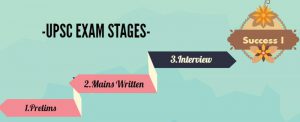A second chance can often be a blessing in disguise. The following are some common things people do that successfully help them clear the prestigious UPSC examinations in their second go. Anish, an expert in testing, gives invaluable tips of clearing UPSC exams in the second attempt, exclusively for Different Truths.
The ‘Union Public Service Commission’ or the UPSC exams attract a large number of students every year all across India for a hand at the coveted position in the Indian Administrative Services. This year itself, the number of people appearing for the exams was high. The examination pattern also saw the emergence of something historic as the first 25 top candidates were all women. However, aptitude and processes vary from person to person and a lot of people clear their examinations in the second attempt.
A second chance can often be a blessing in disguise. The following are some common things people do that successfully help them clear the prestigious UPSC examinations in their second go.
1) Re-Evaluate Their Preparation
As it turns out, an analysis of what factors and areas that went wrong during the preliminary examination need to be taken seriously. This is because the papers follow a pattern and the same concept  can be extended to silly mistakes. The goal is to minimize any technical errors that might have been consistent in the first go and taken note of so that you can come up with a fresh strategy to really nail the exams in the next go. You can attempt previous papers like UPSC prelims and match it with UPSC prelims answer key. This will give you an idea about the pattern and difficulty level.
can be extended to silly mistakes. The goal is to minimize any technical errors that might have been consistent in the first go and taken note of so that you can come up with a fresh strategy to really nail the exams in the next go. You can attempt previous papers like UPSC prelims and match it with UPSC prelims answer key. This will give you an idea about the pattern and difficulty level.
2) Segregate the Crucial from Informational Barraging
This is an essential skill which sounds simple but has a lot more to it would be that of knowing what to study and what not to study. It is something as simple; you can take detailed printouts of the course structure and examination pattern from your memory recall, it can be easily accessed via the net as well. Once you have tangible clarity on what is relevant and what is just a barrage of information, your preparation becomes more streamlined and focused resulting in a more goal-directed outcome.
3) Drop the Books and Start Reading the Papers
It is pure common sense if one sees carefully, that if such a large number of people apply for the UPSC  exams every year, then an equally large number of printing presses will be at work! A large body of text, literature, and magazines come out every month that dedicate themselves to the goal of helping readers to be fully aware of the general knowledge, but that is where candidates often mess up. While it is true that a certain section of textual statistics and factual information stays the same, but then, it stays the same in every book. Any UPSC aspirant must know that general knowledge is subject to current affairs and that can only be generated by actually being aware of what is happening currently. The newspapers and news are some of the best sources that will bring you the latest in every domain. So, start referring to the newspapers for a more modified approach.
exams every year, then an equally large number of printing presses will be at work! A large body of text, literature, and magazines come out every month that dedicate themselves to the goal of helping readers to be fully aware of the general knowledge, but that is where candidates often mess up. While it is true that a certain section of textual statistics and factual information stays the same, but then, it stays the same in every book. Any UPSC aspirant must know that general knowledge is subject to current affairs and that can only be generated by actually being aware of what is happening currently. The newspapers and news are some of the best sources that will bring you the latest in every domain. So, start referring to the newspapers for a more modified approach.
4) Practice, Practice, and Practice
Practice makes a man perfect, and this is what comes handy when you sit down to give the examination. In the first attempt, candidates are often very new to the whole process and a little overwhelmed and a second attempt becomes a boon here as your knowledge of the pattern becomes handy. One can procure mocks tests booklets and previous UPSC papers like UPSC prelim paper and compare with UPSC Prelim answer key. UPSC exams are known for submission of incomplete papers often because candidates are not able to finish so practicing beforehand becomes handy here.
5) Let Your Answers Stand Out
In the creative writing section, try to create responses that come from a place of creativity. A creative bent approach allows the assessor also to see how you tend to analyze and can often become a great indicator  of how you might approach a real-life issue at hand. Let your answers be reflective in that regard. That level of creativity on paper also manifests when you align your thinking skills that way, so practice patterns of writing and thinking that reflect the same.
of how you might approach a real-life issue at hand. Let your answers be reflective in that regard. That level of creativity on paper also manifests when you align your thinking skills that way, so practice patterns of writing and thinking that reflect the same.
6) A Suitable and Realistic Timetable
A lot of times things go awry in the first attempt because the person who is preparing has put in the optimal efforts but only studied from the vantage point of cramming to write in the paper. A fine line between someone who has cracked the exams and who hasn’t also depended on how they are assimilating what is being learned. A timetable that has enough space for knowledge assimilation will seem to be a long process but is shorter because what is understood properly once does not mandate a revisit. So time management also needs to be put thought into.
7) After All the Devising, Proper Revising Becomes Crucial
After implementing some of the above ideas, one thing becomes important – revision. This can only happen when the timetable has been applied correctly. The revision also allows one to study with a free  mind where some previously forgotten concepts and theoretical frameworks become more easily comprehensible. Their true meaning also becomes all the more obvious and thus, application of principles, theories and concepts into real-life situations becomes easier, giving the UPSC hopeful the second inning at clearing the paper.
mind where some previously forgotten concepts and theoretical frameworks become more easily comprehensible. Their true meaning also becomes all the more obvious and thus, application of principles, theories and concepts into real-life situations becomes easier, giving the UPSC hopeful the second inning at clearing the paper.
The above strategies work best when applies well. Having a vision is wonderful, but that vision needs to be supplemented by something more, a sense of direction. These are not sure shot techniques that guarantee a crack in the examination but give you a better shot at cracking the UPSC simply because it enables you to understand better, apply and assimilate the journey that deserves a saga of its own. So paste them on your walls, highlight them and abide by them if you are a UPSC aspiring person.
©Anish Passi
Photos from the Internet
#UPSCExams #ExamTakingStrategies #TipsToDoWellInExams #ClearTheUPSCExams #EducatitonAndCareer #DifferentTruths





 By
By

